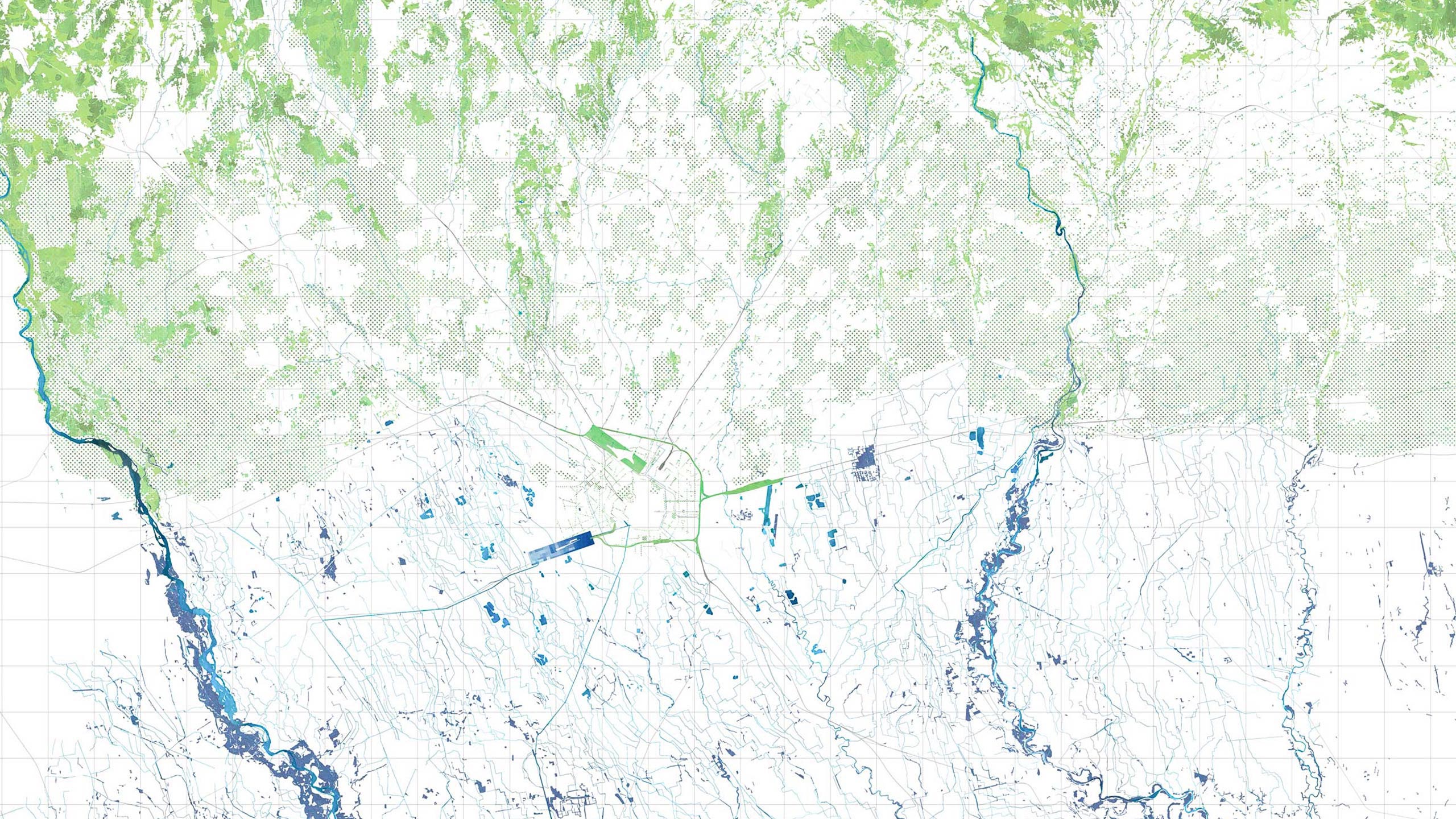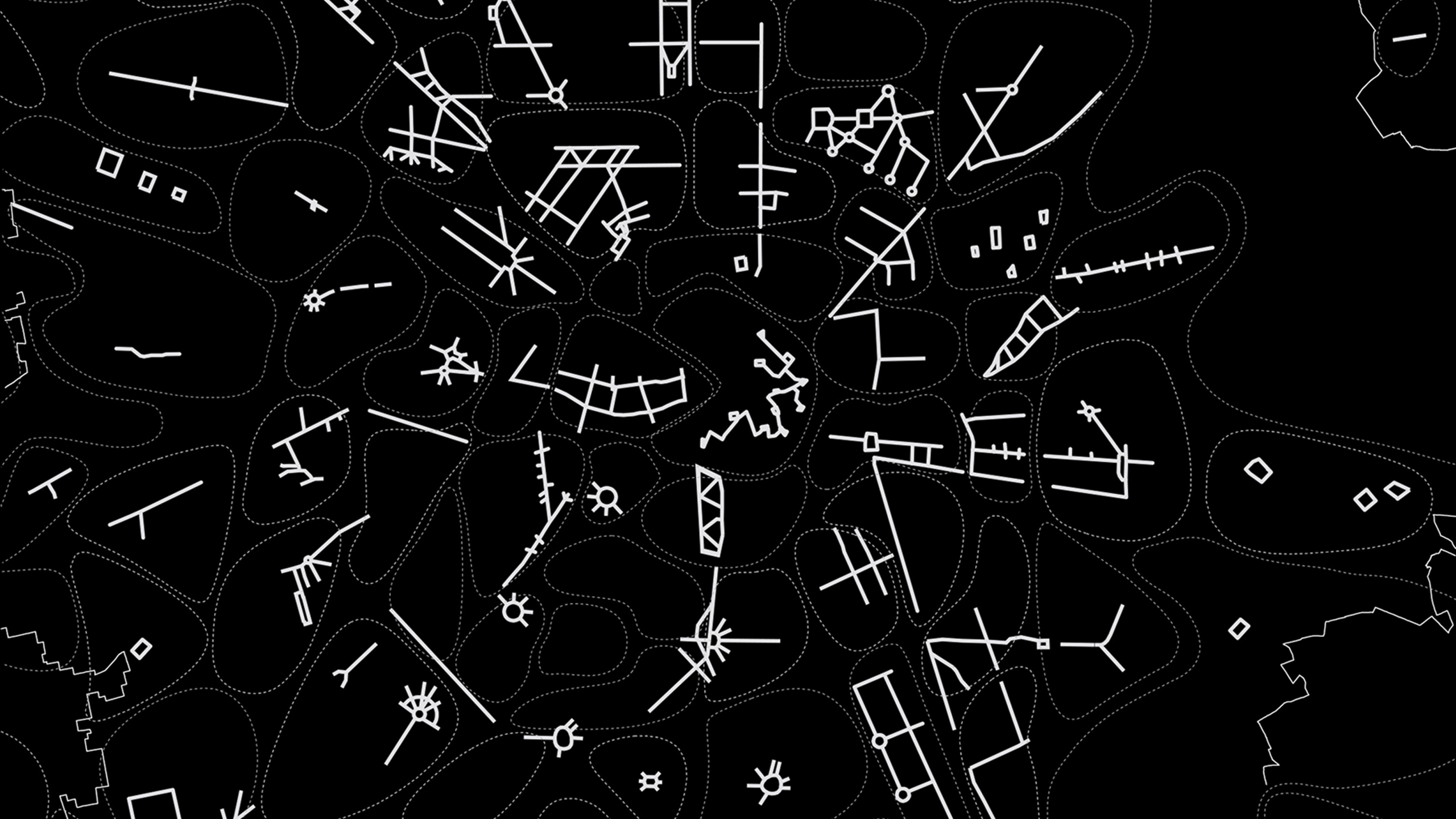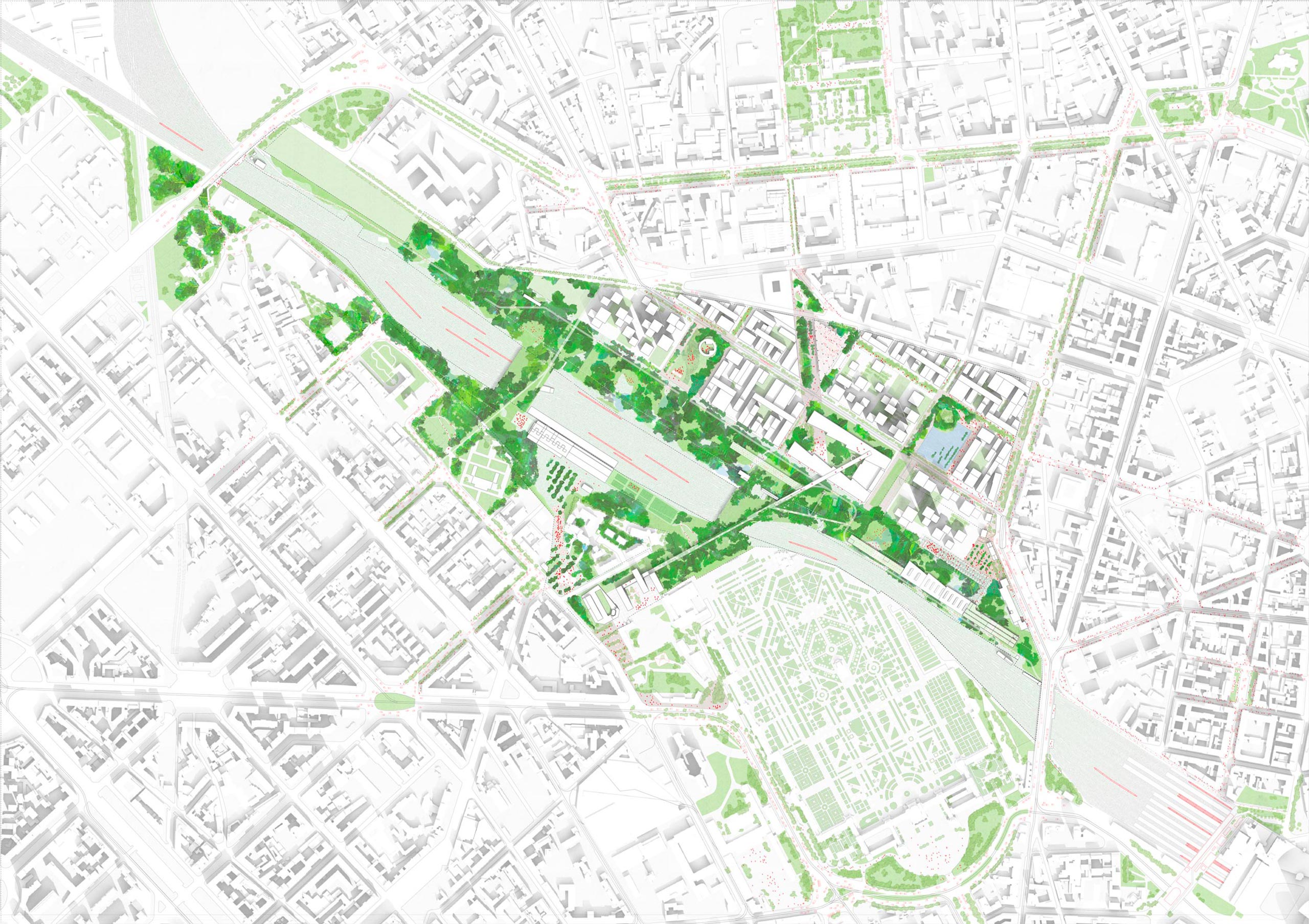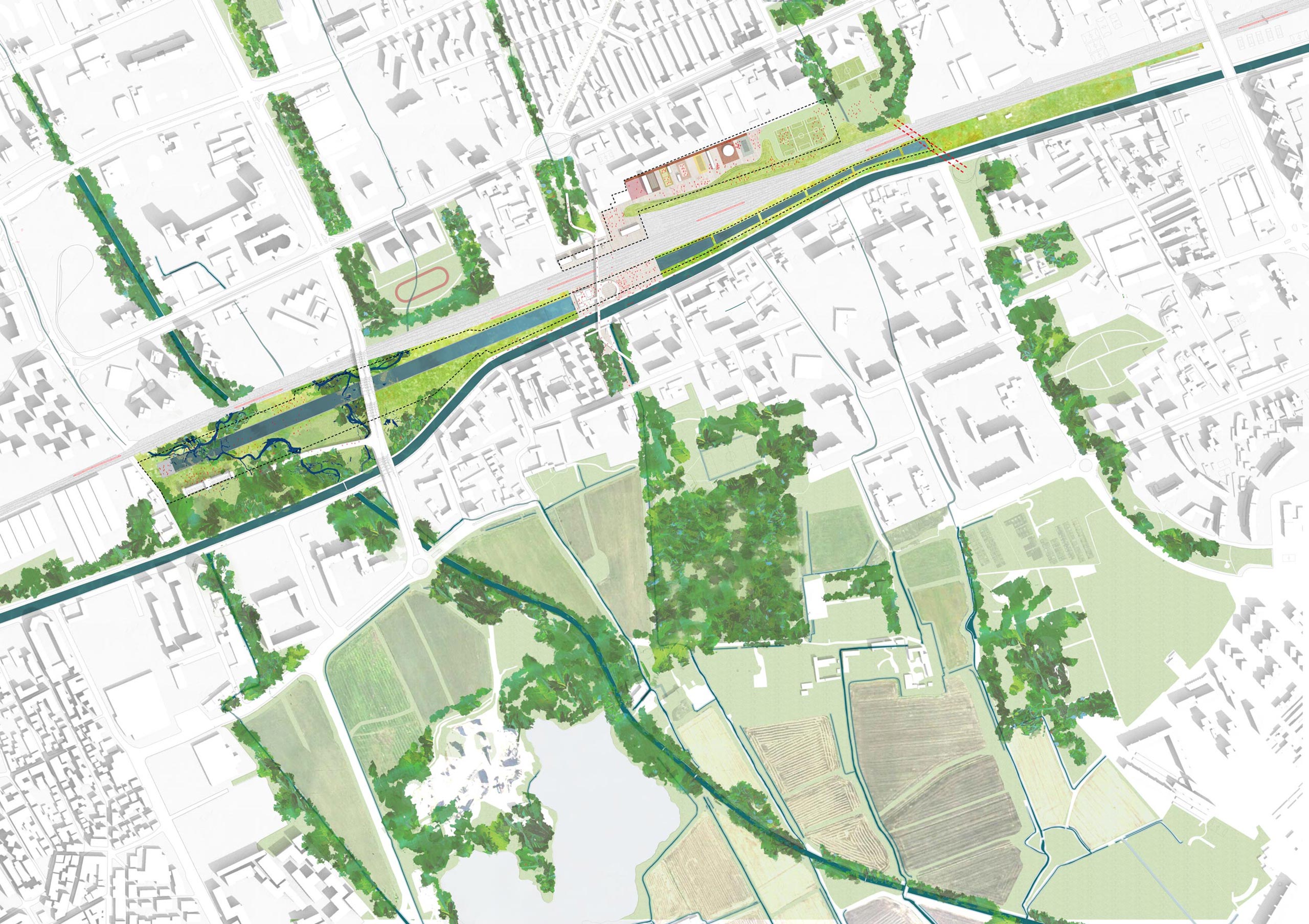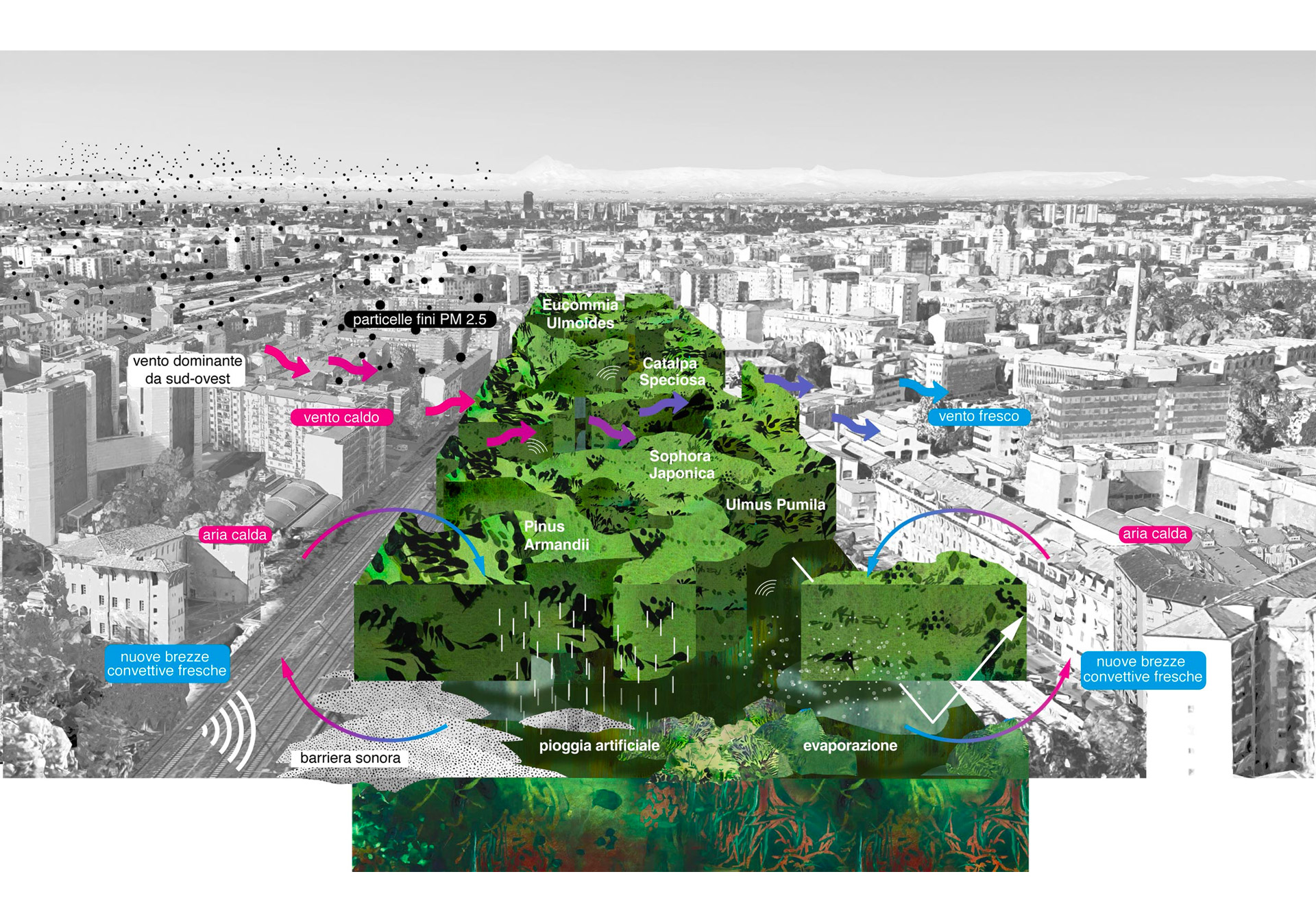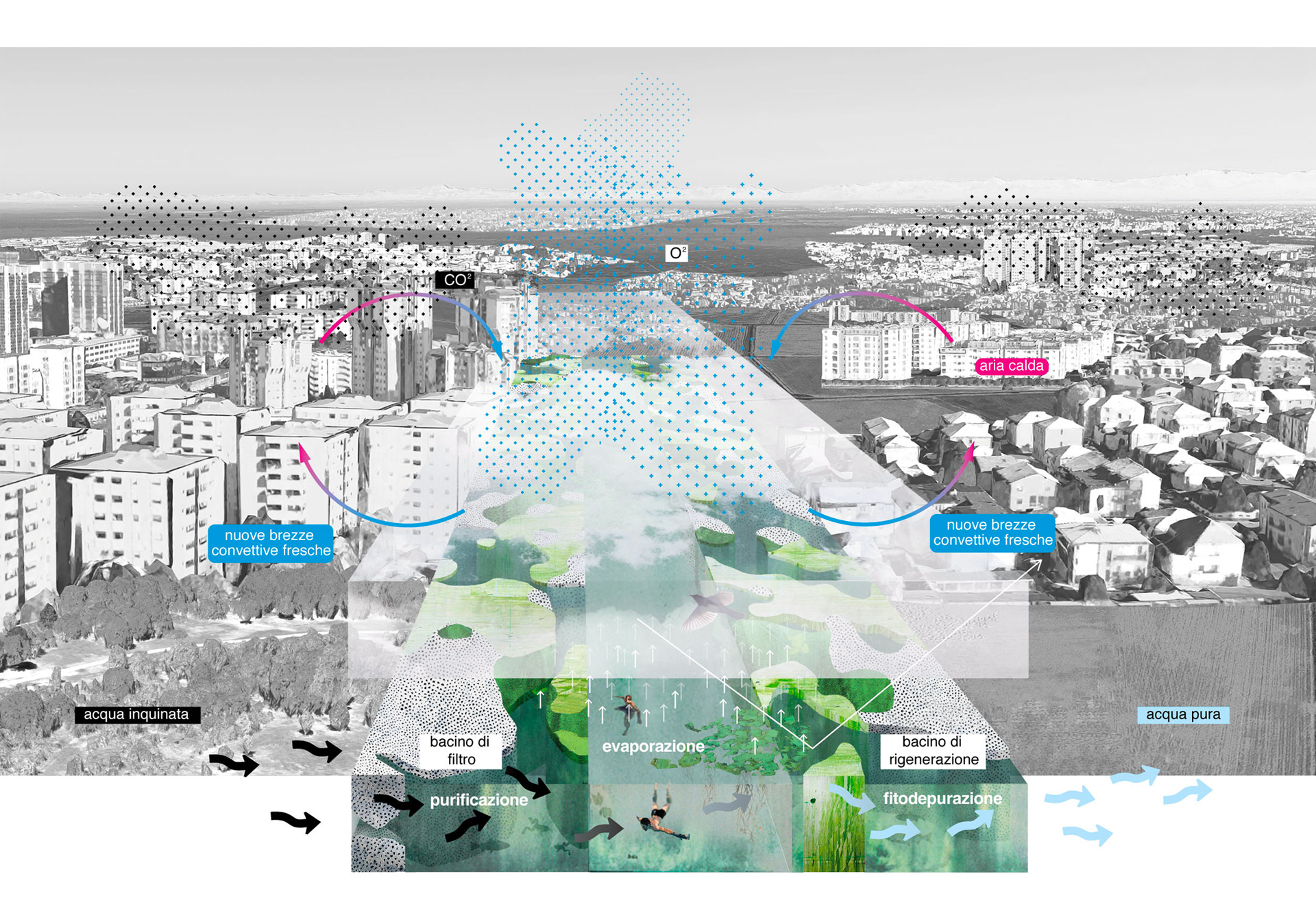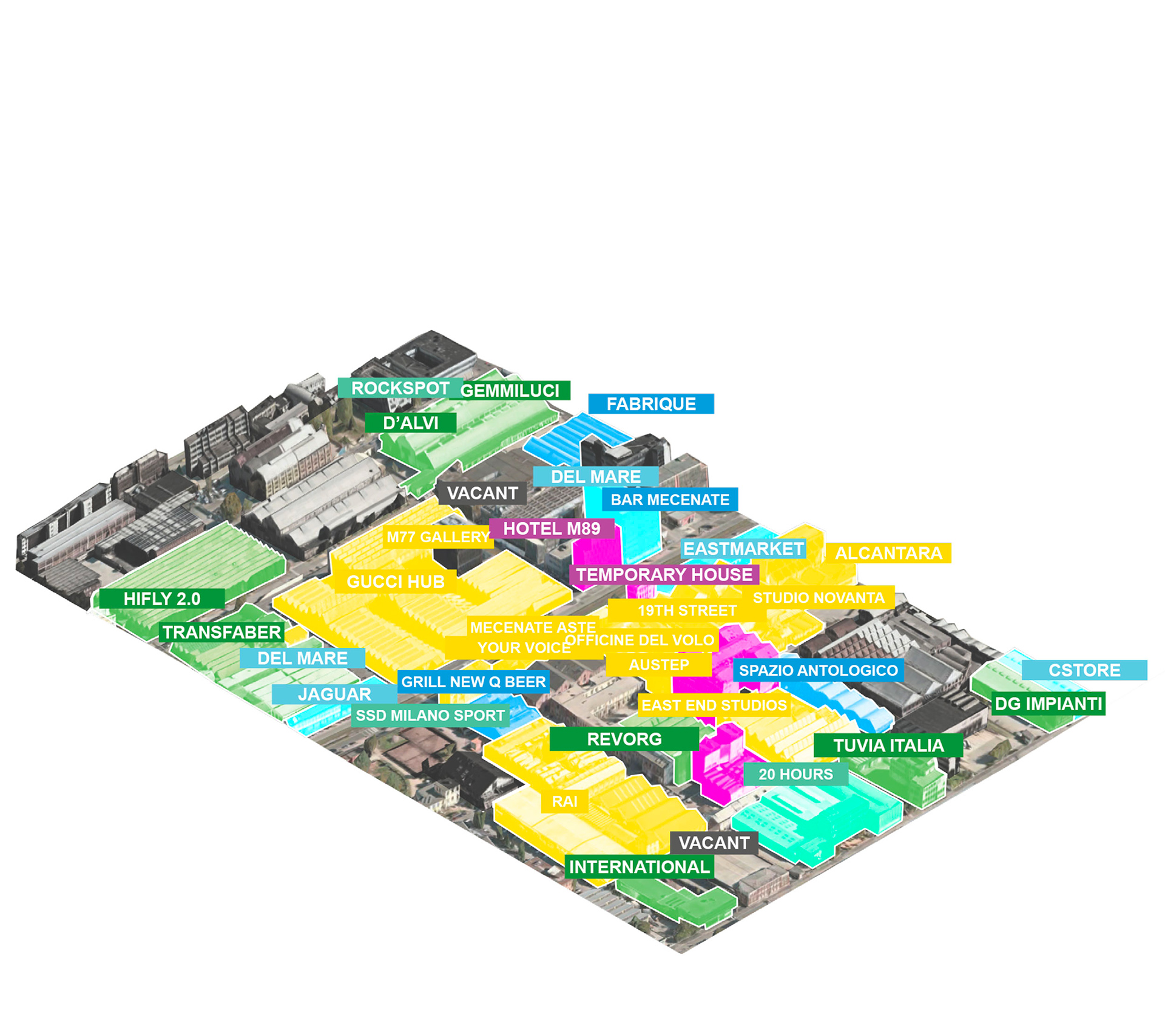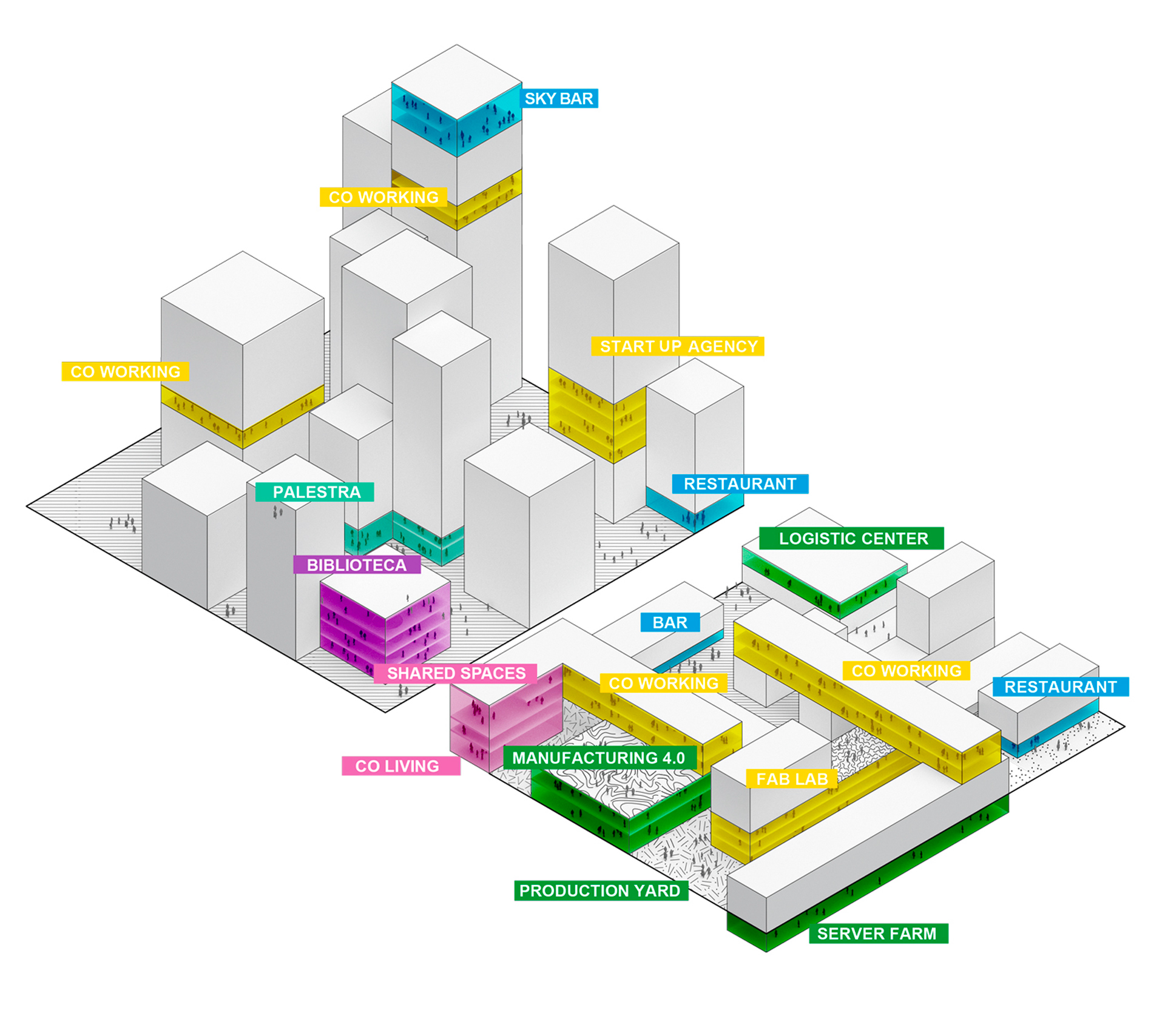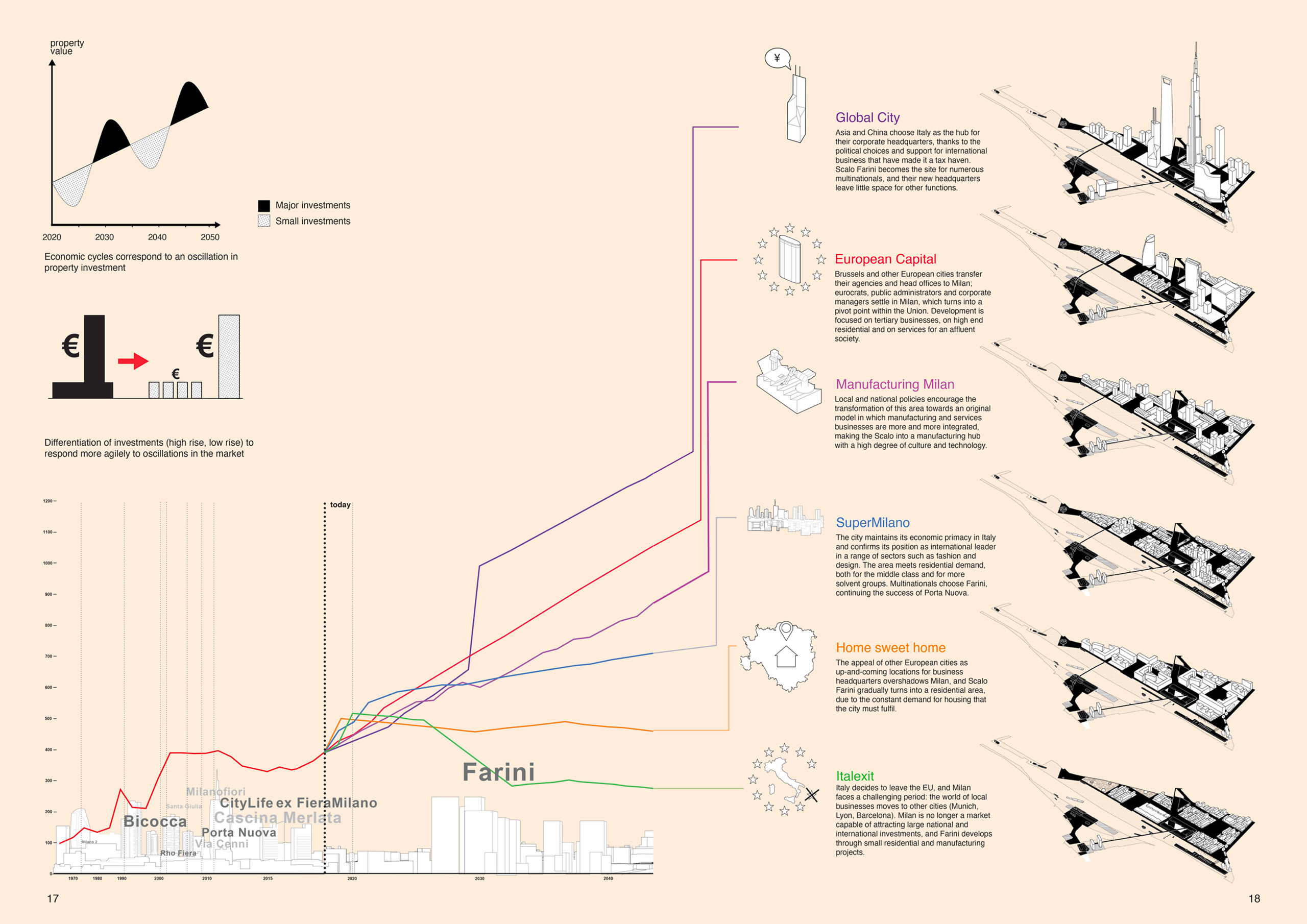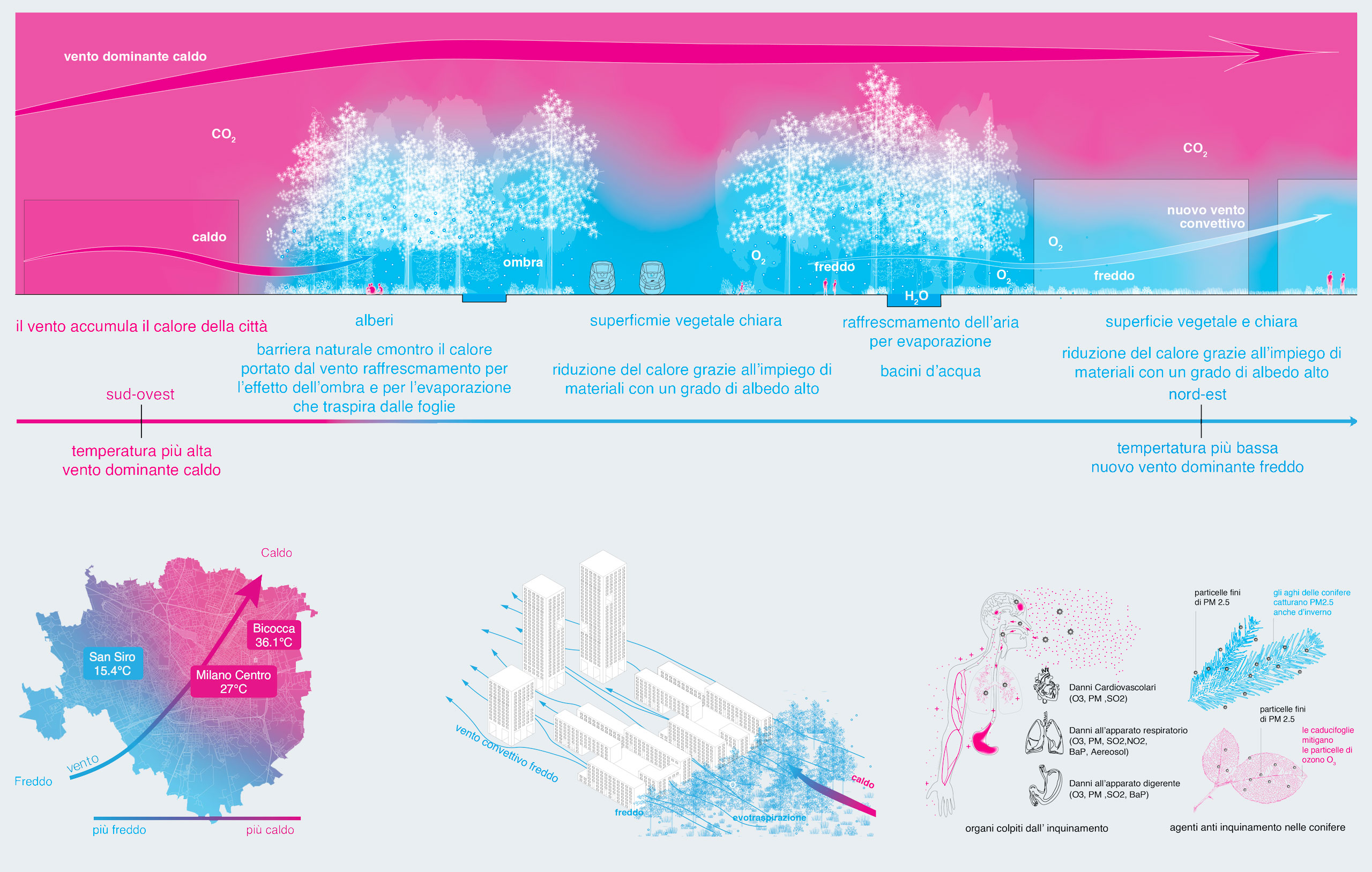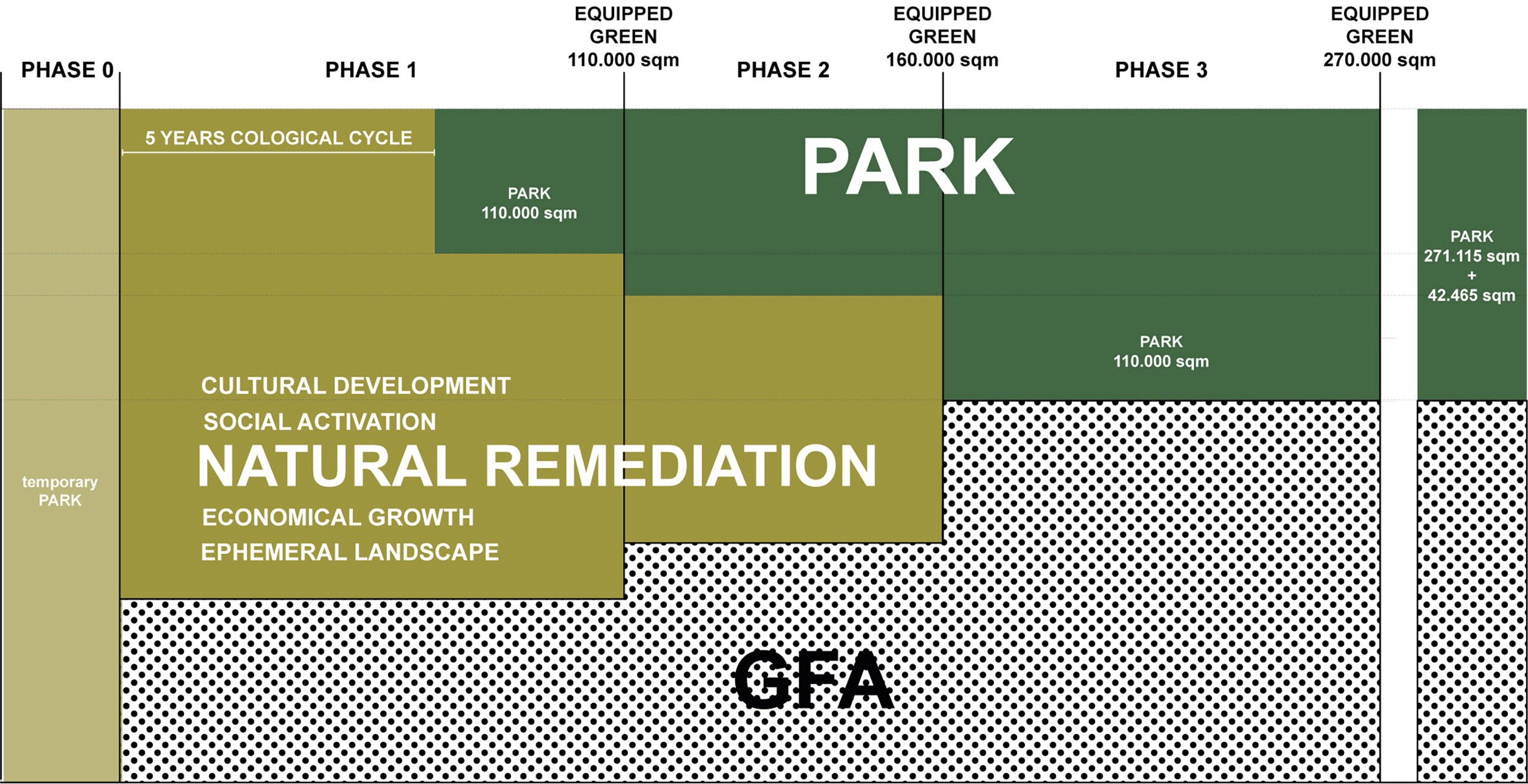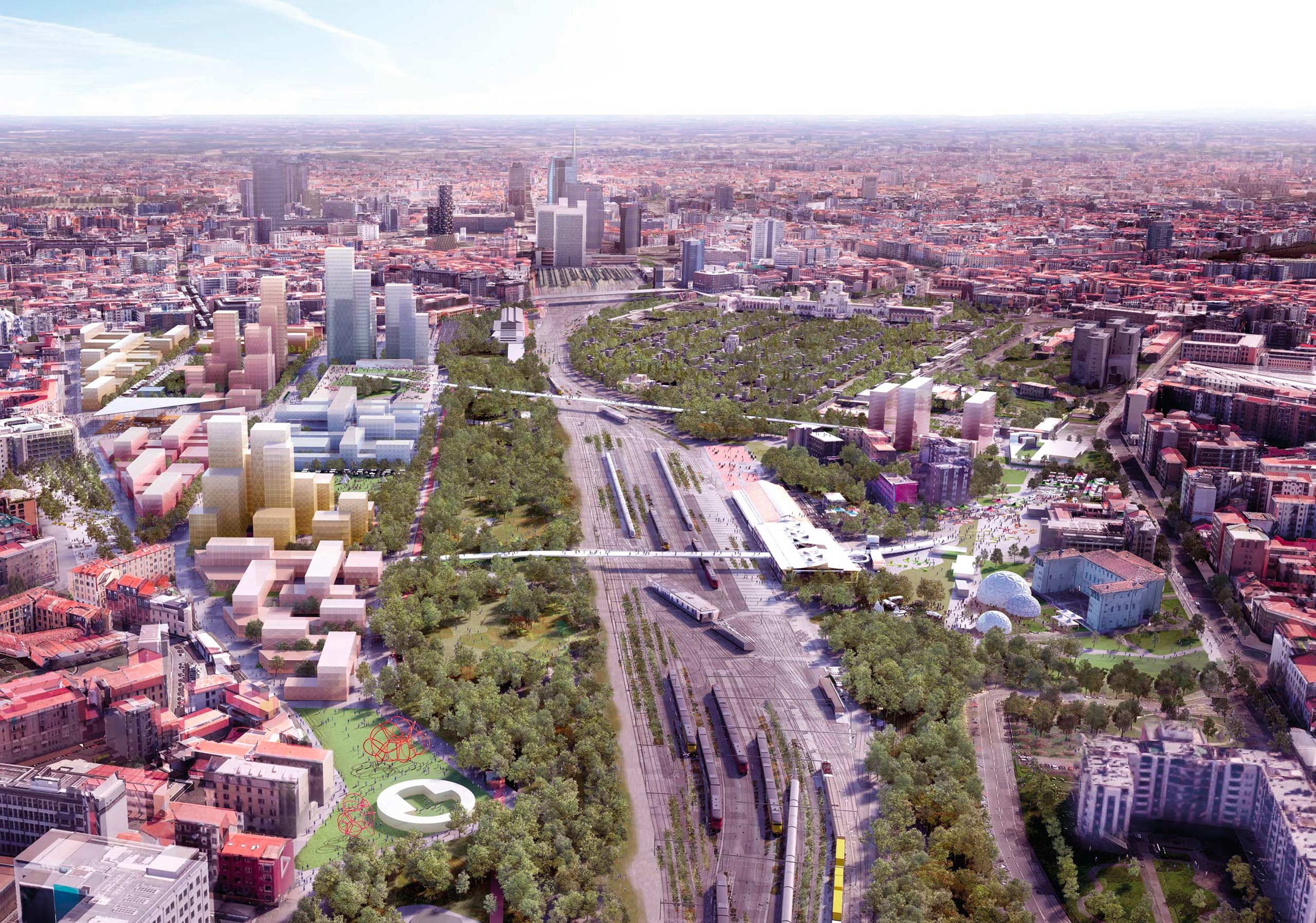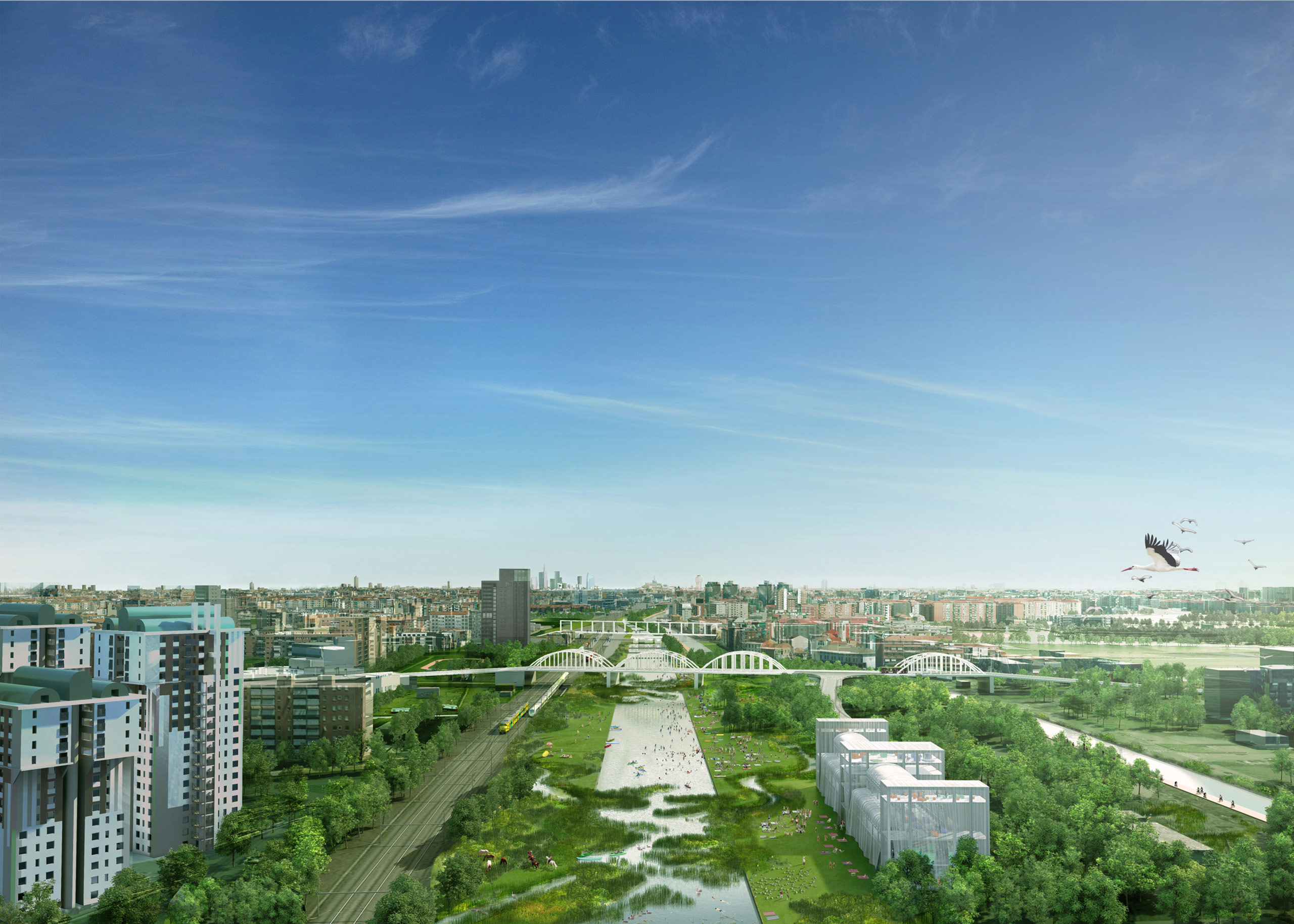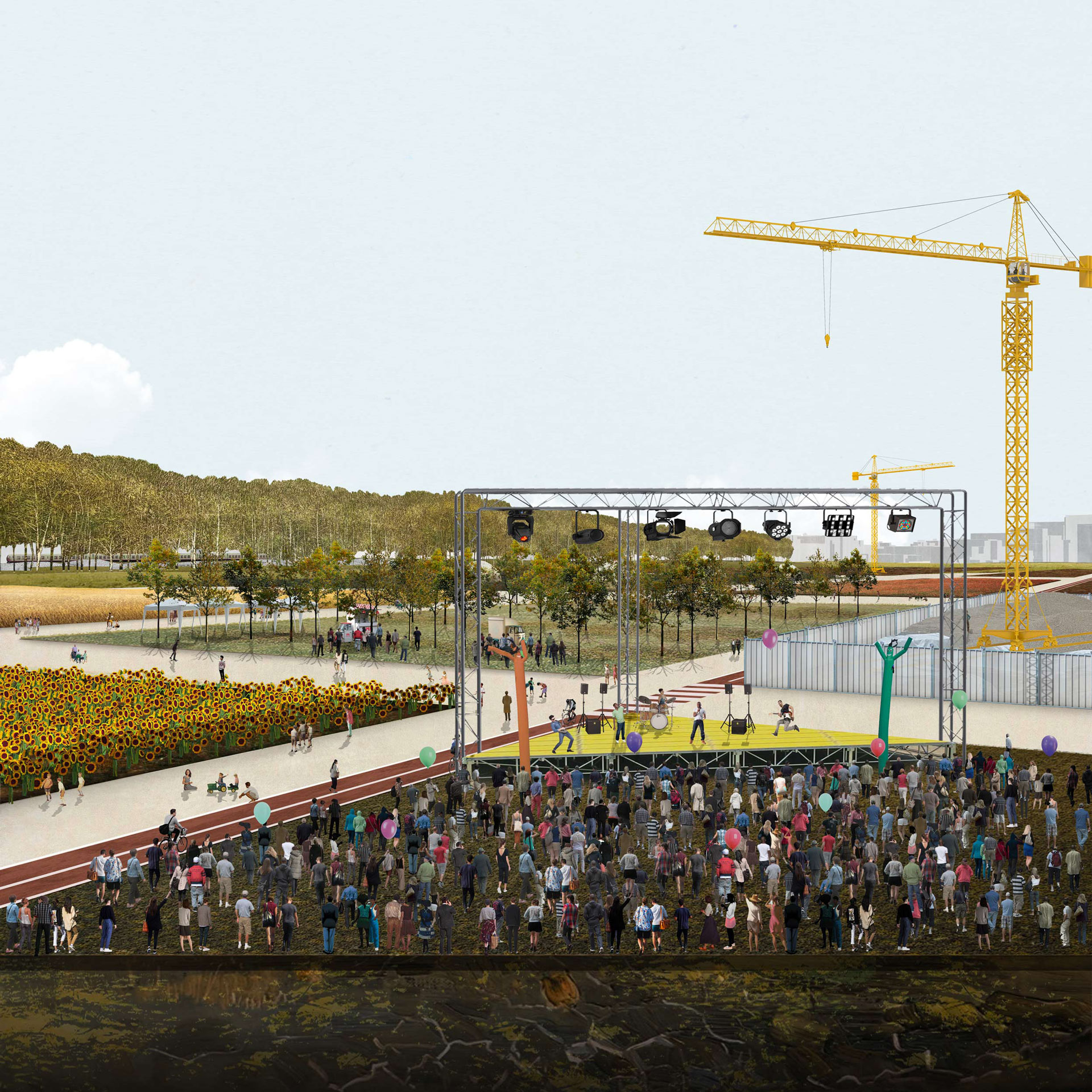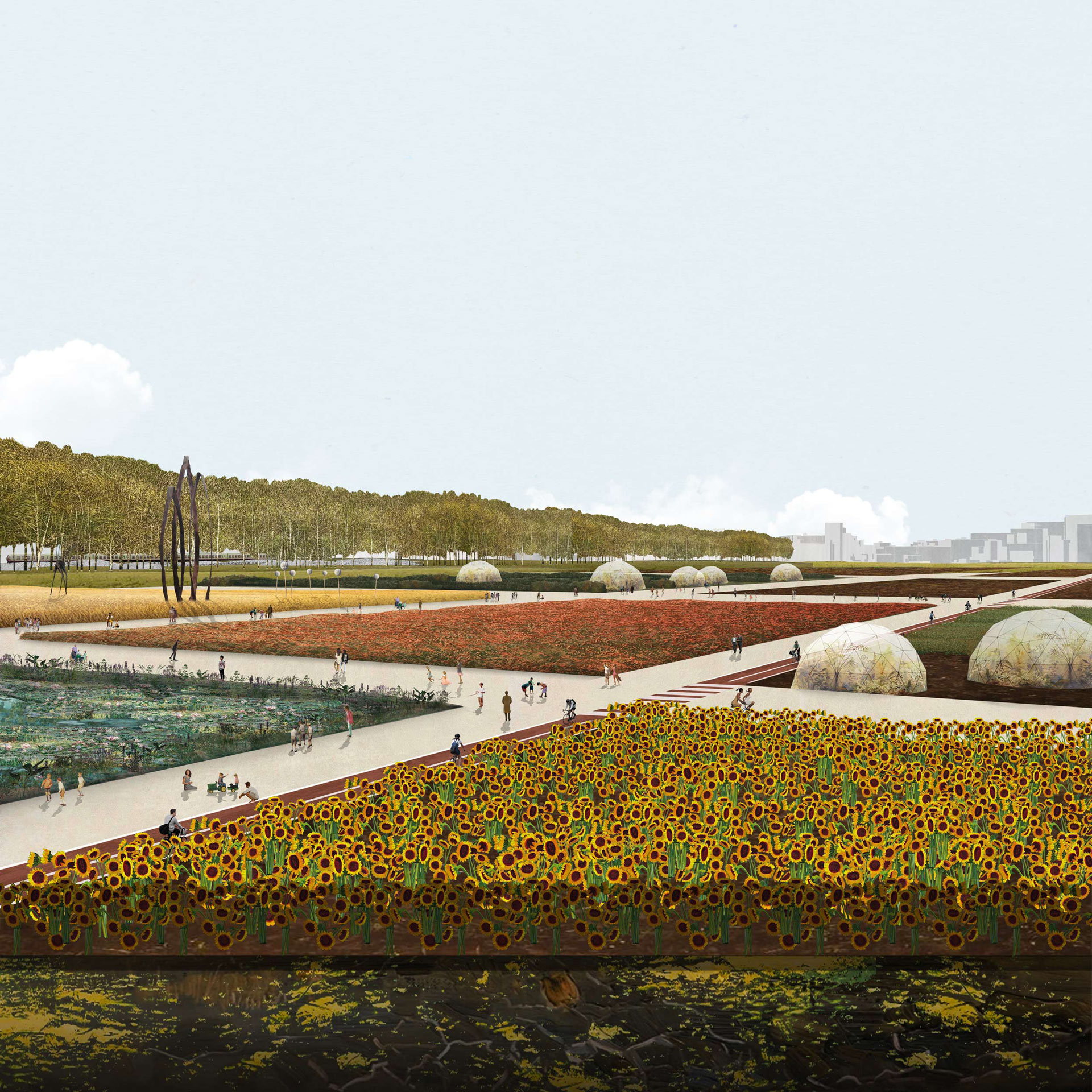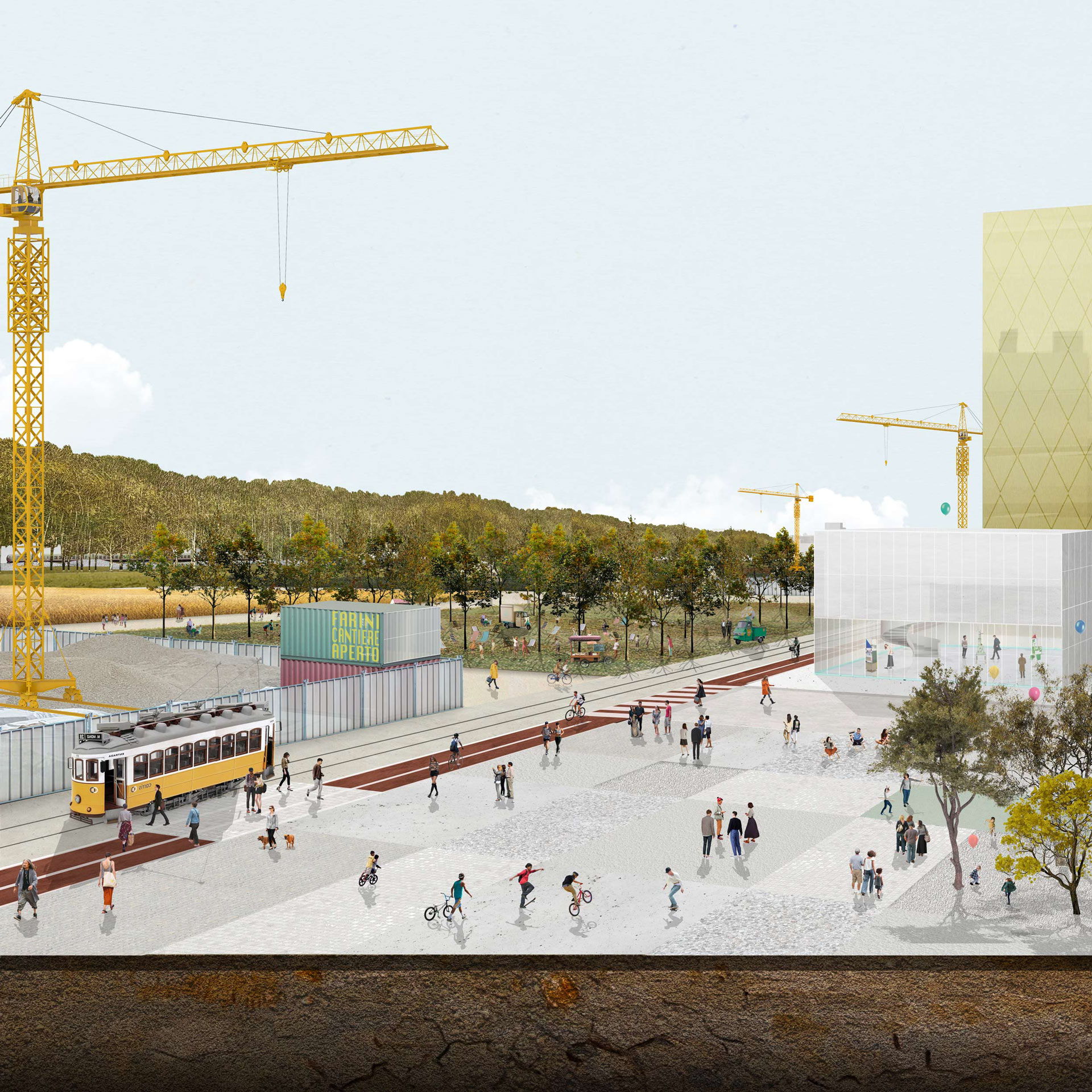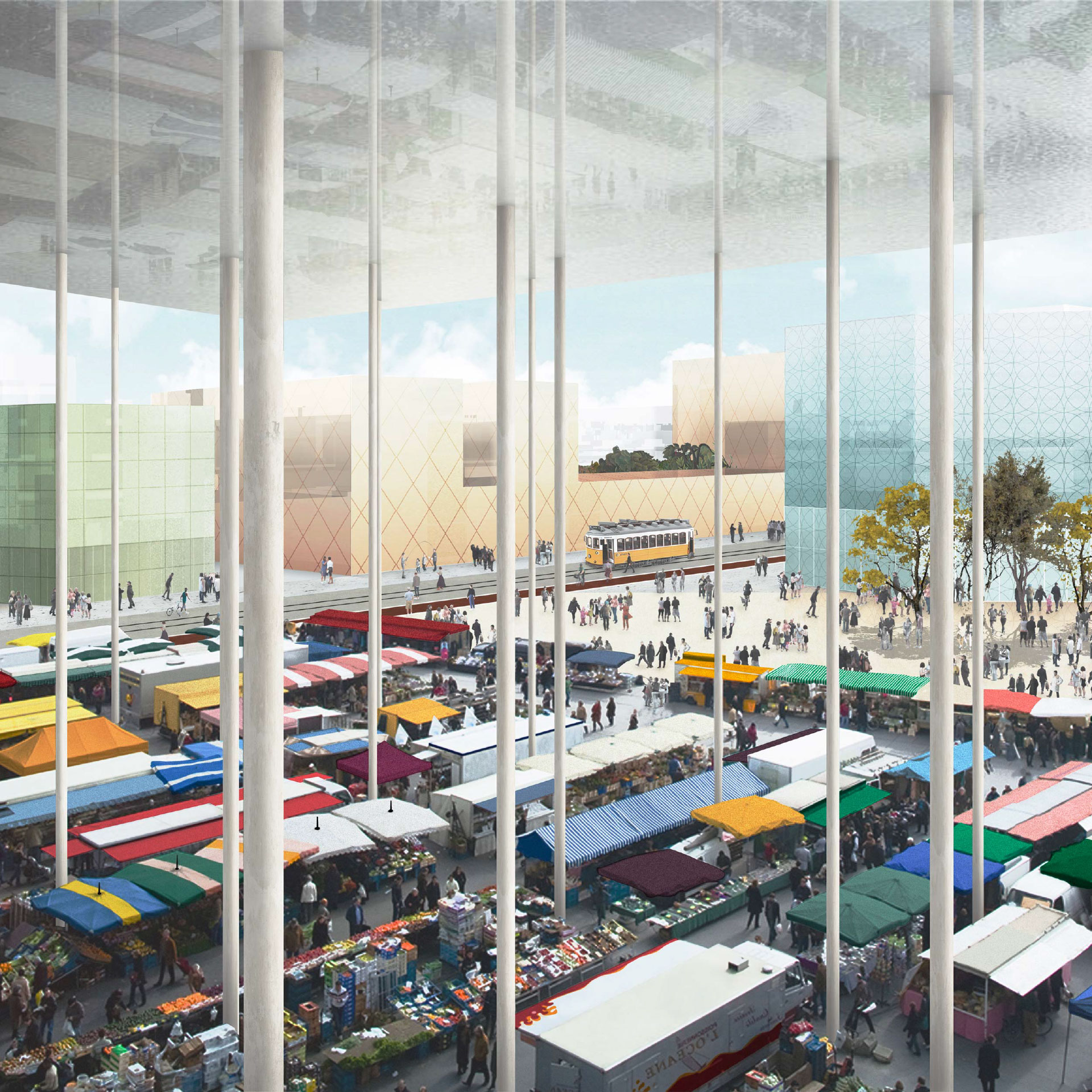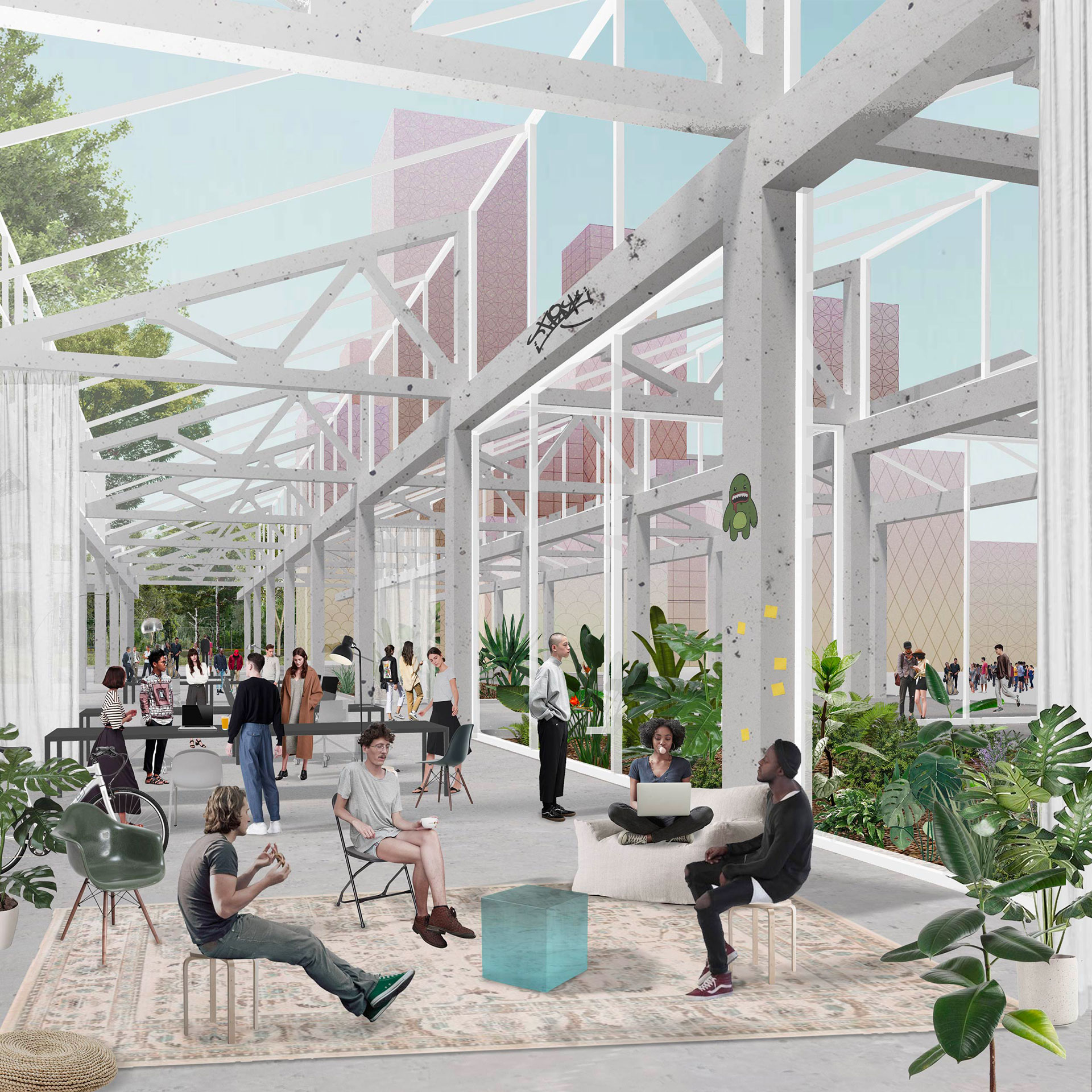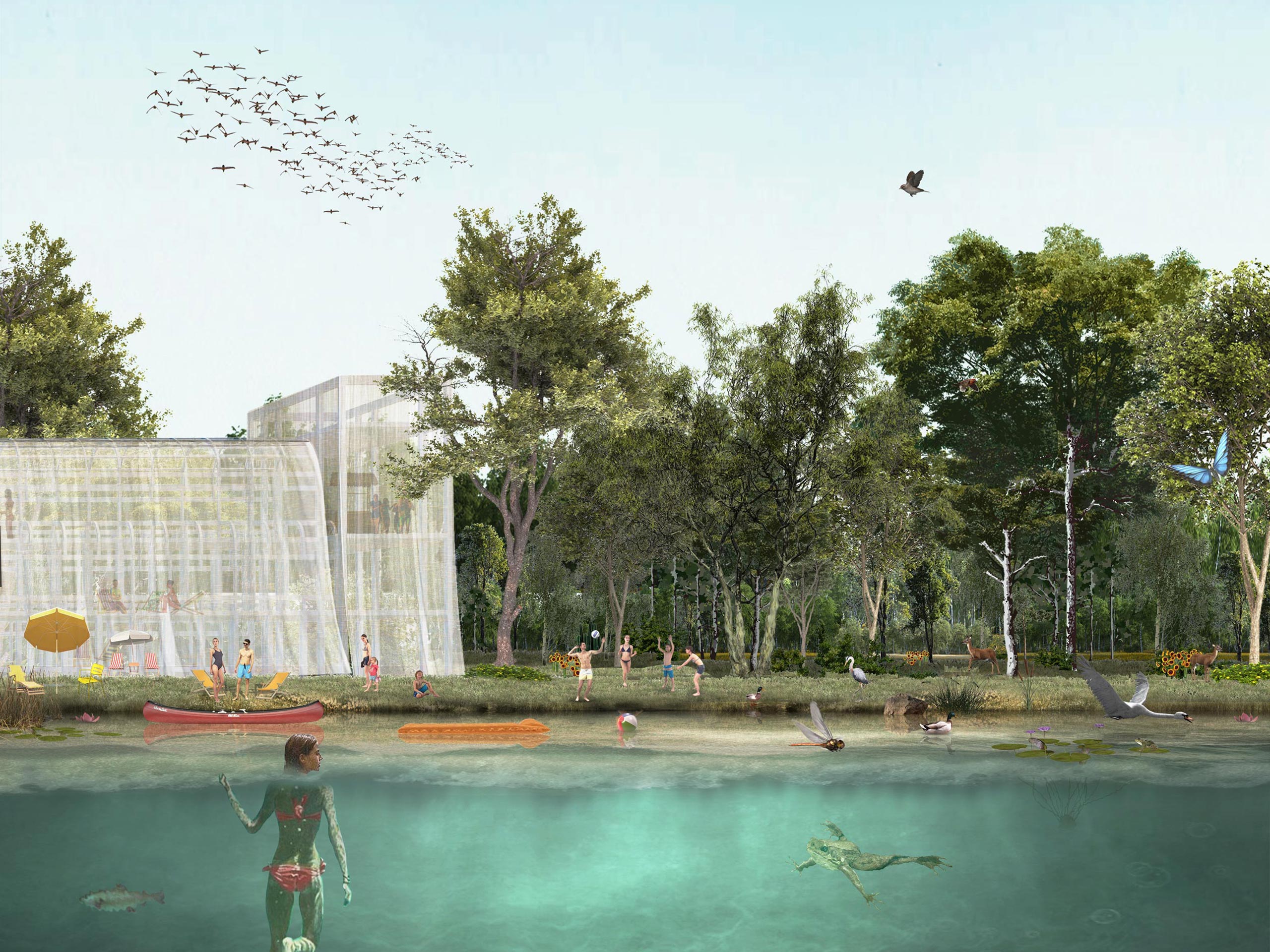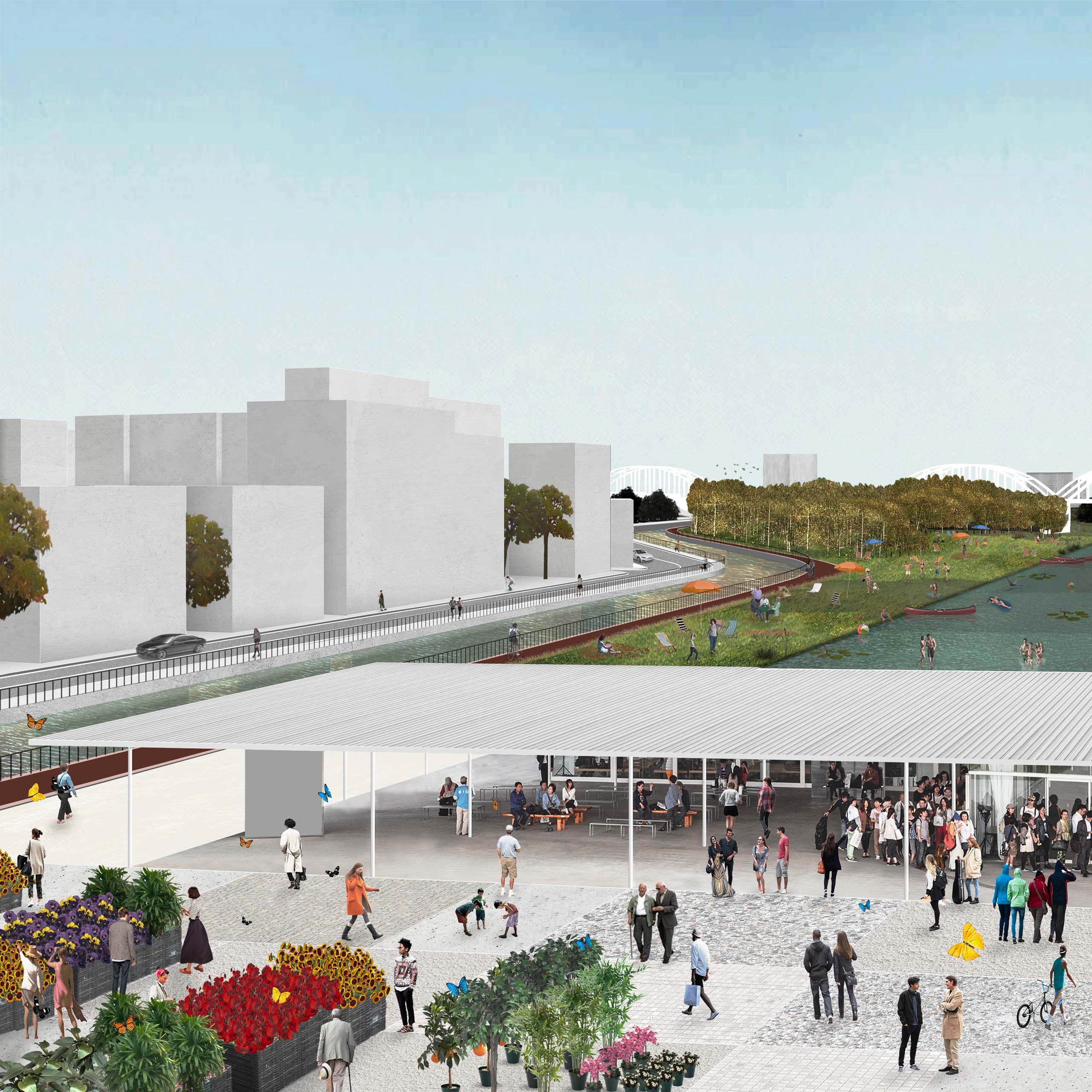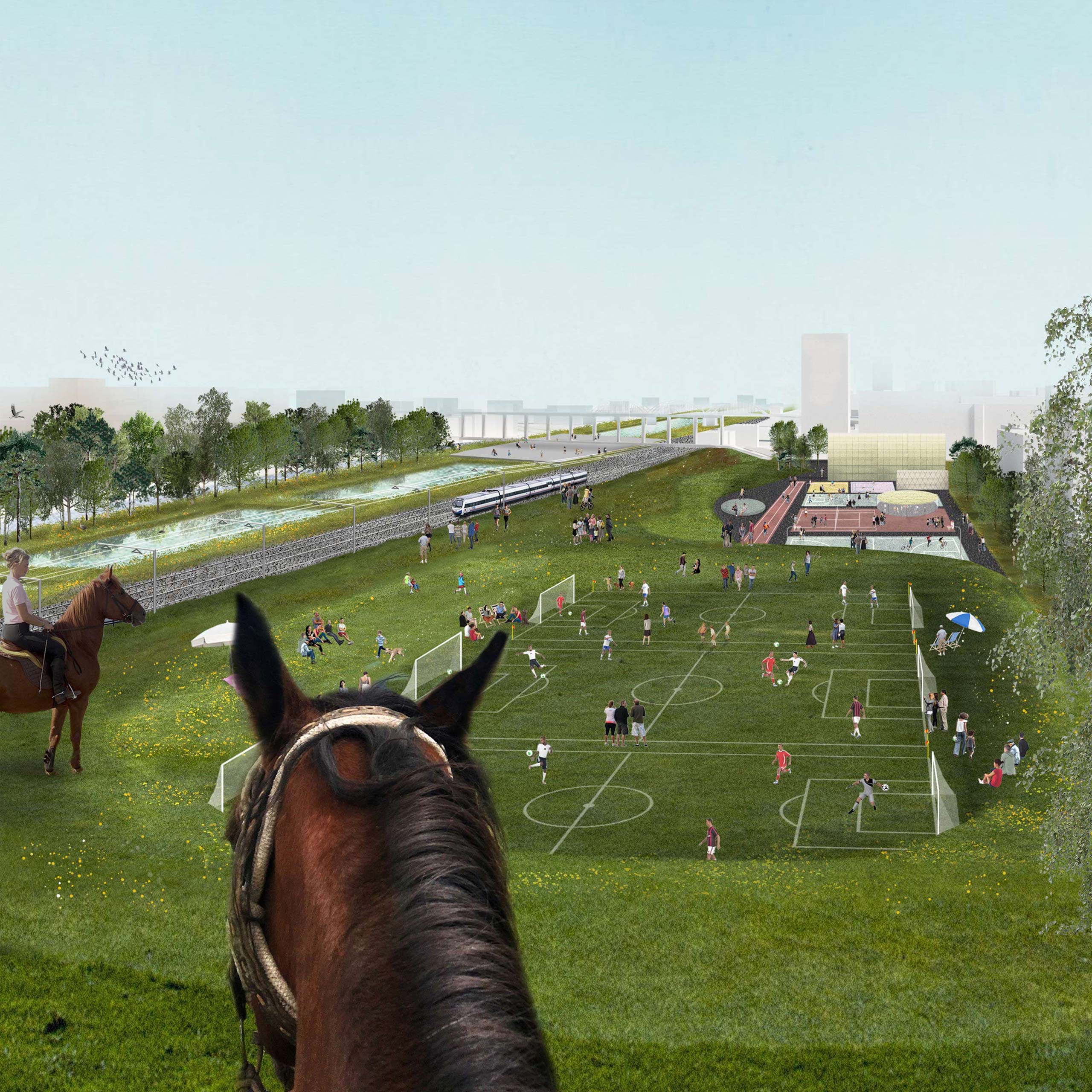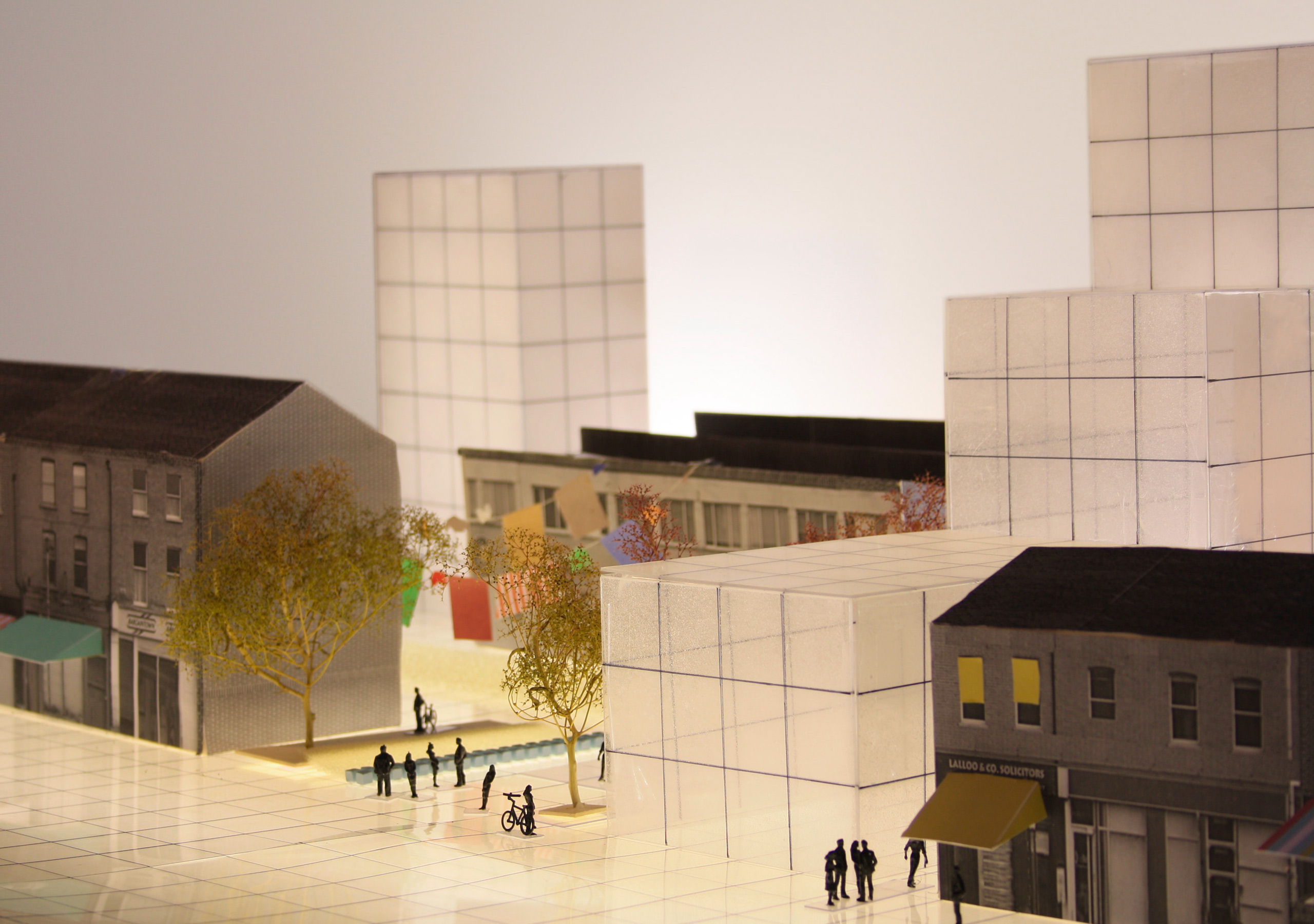At a time of dramatic environmental transformation and continuing economic uncertainty, our priorities have changed. The most valuable currency is no longer “brick” – the built environment – but the environmental and climatic conditions that our cities will be able to provide and ensure for their citizens. The city of the twentieth century, with its high energy consumption, must be overcome by reconsidering the principles that have marked urban development since the classical era.
By imagining a transformation of current models of economic development, our project flips the perspective and proposes two new environmental devices: a green zone – a wide, linear forest at Scalo Farini which cools hot winds coming from the southwest, purifying the air of toxic particles; and a blue zone – a long, linear system at San Cristoforo which cleans the groundwater and creates a landscape for both humans and animals.
In this new value system buildings are residual, fluid, uncertain. At Farini, a new urban grid dotted with a strategically distributed spatial framework ensures maximum flexibility, while the city of Milan offers resilient settlement models that can respond to the shocks of the global economy.
After the wall surrounding the rail yard had been demolished, the void has been opened up and a complete continuity with the city around it has been re-established. This larger Parco Farini releases new vistas and establishes relationships between neighbourhoods that were historically separated.
In this cohesive setting, different landscapes coexist and have been planned to reflect the surrounding built environment and materials. With its dense, green mass of trees, the ecological filter defines a clear boundary to the north, a margin against which the pattern of the city is broken, defining the urban significance of the park. Along either side of the railway line, mineral soils and wild vegetation integrate the park with the mechanical and natural landscape of the rail yard. To the south, the current fragmented system of green space is recomposed into a mosaic of urban gardens and new public facilities, in continuity and in synergy with existing ones. Within the city grid, a structure of urban greenery and strategically distributed public spaces is interwoven with the fabric of the adjacent neighbourhoods, establishing relationships of continuity with its surrounding context. Inside the grid, a porous settlement system accommodates the city’s public life within its blocks.
The defining feature of this project is economic resilience. Indeed, it has been conceived to be implemented within the most varied situations of economic development in the city of Milan; and it is ready to be adapted to a wide range of practical circumstances. Indeed, the project can be implemented both in scenarios of economic growth – even particularly intense growth, looking ahead to the increase in buildings that have already been planned and approved – and in contexts with a decrease in demand from families and businesses caused by a variety of external shocks to the system.
Public life in Milan shrinks and expands within its private spaces, extending the actual urban surface area of the city in a dynamic, effervescent manner. Blocco Milano (‘Milan Block’ concept) represents the possible evolution of four sample areas, interpreting their ability to be constructed through an incremental process, and to host urban activities and functions in synergy with those of this typically private city. Blocco Milano is not a type of settlement; it is a transversal settlement principle that is adaptable to different economic scenarios, and will always dedicate a significant proportion of open spaces for use by the city. Behind buildings’ main doors, inside gardens, at the heart of porous, permeable blocks, is where public life in Scalo Farini will have its most creative, dynamic outlet.
The water network of the Milan area resurfaces at the rail yard, bringing nature back to the city via a completely new body of water. Parco San Cristoforo becomes common ground at city level, for human
and animal communities. It enables activities that do not currently exist in Milan: horse-riding along the banks of the Naviglio, swimming outdoors for miles, observing species of migratory birds in transit, or going snorkelling to explore the underwater ecosystem. The city’s largest natural pool fulfils the residents’ lifelong dream of being able to swim in Milan’s canals.
Water is channelled into Parco San Cristoforo through a complex system of canals and purifying reservoirs, then flows into the long bathing pool, before flowing out into the cultivated plain of Parco Sud. Freed from pollutants, the water is the principle material in Parco San Cristoforo. It is a fluid medium for sports and outdoor activities; home to animal and plant species; a place for a profound, physical understanding of the relationship between humans and the environment.
